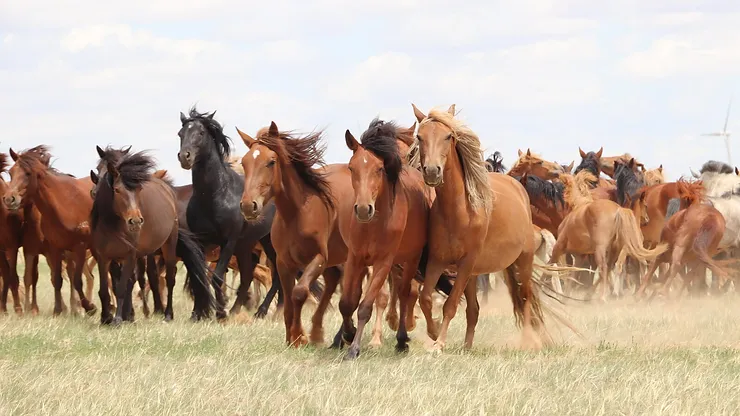By: Selena Zhu
Appaloosa, Belgian Draft, Holsteiner, and Quarter Horse are just a few of the over 200 different horse breeds living around the world today.
Although breeds can look wildly different, they all belong to a single species: Equus caballus.
Over thousands of years, people have created different breeds by mating horses with desirable traits. That’s why the look of a breed is often related to what it’s used for. When these traits are passed down over many generations, a new breed is produced.
For example, about 200 years ago, English horse breeders mated light, swift Arabians with local riding horses. This created the Thoroughbred—a lean, leggy, super-speedy breed used in horse racing.
Horses come in a wide range of colors and patterns. For some horse breeds, only a particular color or color combination is allowed. In others, individual horses may be virtually any color.
The coat color of a horse is determined by its genes. There are two basic coat colors: “red” and “black,” which are associated with major genes. However, many other genes affect the final appearance of the horse. The mixing of these genes results in the rainbow of colors and patterns we see in horse breeds today.
Horses are measured from the ground to the top of their withers. The withers are the highest point of the back. It is created by the vertebrae between the shoulder blades.
Traditionally, horses are measured in “hands.” One horse hand (or hh) is 4 inches (10 centimeters) long. It’s about the width of a man’s fist. So, 1 1/4 hands is written as 1.1 hands, while 1 3/4 hands is written as 1.3 hands.
One of the tallest breeds, the Shire, can reach 19 hands high (76 inches, or 193 centimeters). Miniature horses can be as small as 5 hands high (20 inches, or 51 centimeters).











